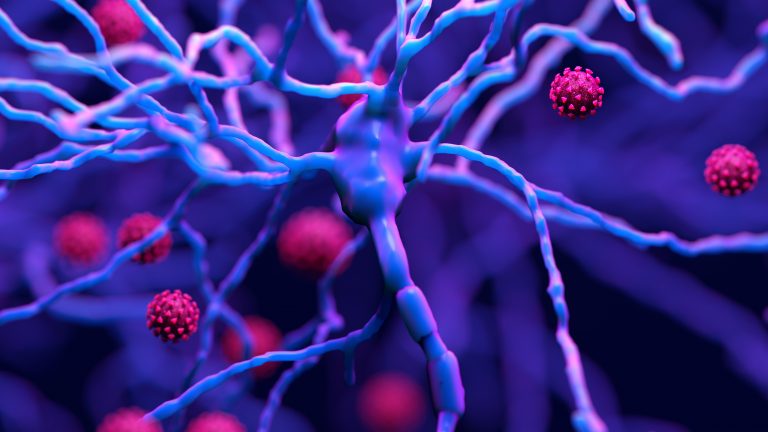
Millimeter-wide 3-D models that mimic vital aspects of the human nervous system have been developed in a step that could accelerate drug research for neurological conditions such as multiple sclerosis (MS). The models will be used to study myelin.
Researchers say the models are the most natural representation of human myelination developed in a lab and are a promising platform for studying neurological diseases and for testing drugs for conditions linked to myelin loss, including MS.
Scientists at the University of Edinburgh’s Anne Rowling Regenerative Neurology Clinic and the Euan MacDonald Centre for Motor Neuron Disease Research developed their human myelin model using skin samples donated by volunteers. Skin cells were reprogrammed into induced pluripotent stem cells, which in this case were turned into spinal cord cells.
These cells were then grown slowly into organoids, i.e., 3-D structures of cell bundles, including neurons and oligodendrocytes that are key to creating myelin. The researchers were able to see myelin developing spontaneously around the axons between cells within the organoids. By looking at the axons under a microscope, they could see that the myelin in this model was functioning as it would in a healthy brain or spinal cord.
The research team, which published its study (“iPSC-derived myelinoids to study myelin biology of humans”) in Developmental Cell, then created an organoid using stem cells from a patient with a rare gene mutation that affects myelination. The model showed that key aspects of this cell bundle were consistent with the disease.
“Myelination is essential for central nervous system (CNS) formation, health, and function. Emerging evidence of oligodendrocyte heterogeneity in health and disease and divergent CNS gene expression profiles between mice and humans supports the development of experimentally tractable human myelination systems. Here, we developed human iPSC-derived myelinating organoids (“myelinoids”) and quantitative tools to study myelination from oligodendrogenesis through to compact myelin formation and myelinated axon organization,” write the investigators.
“Using patient-derived cells, we modeled a monogenetic disease of myelinated axons (Nfasc155 deficiency), recapitulating impaired paranodal axo-glial junction formation. We also validated the use of myelinoids for pharmacological assessment of myelination—both at the level of individual oligodendrocytes and globally across whole myelinoids—and demonstrated reduced myelination in response to suppressed synaptic vesicle release.”
These new models will allow scientists to compare the differences between the cells of healthy individuals and those with different neurological diseases and to test drugs of interest in human cells before using them in a full clinical trial with patients, note the researchers. They hope that their model will overcome the challenges of studying the human brain and nervous system at the cellular level, which is extremely difficult due to problems accessing brain and spinal cord tissue without risk and huge inconvenience to patients.
“Demyelinating disorders have a profound effect on the quality of life for patients,” says Owen Gwydion James, PhD, the lead researcher. “Now we have the capability of studying human myelination experimentally, a major goal is to identify drugs that can promote myelination. We believe that this new approach could be a huge boost to the toolbox that allows us to do this effectively.”
The approach complements animal models, which can be limited in how they reflect human disease and the way that drugs interact with human cells.
The authors say the model is a significant step forward in the study of human myelination and drug development, but caution that treatments tested on this model are still some way from being offered to patients.













